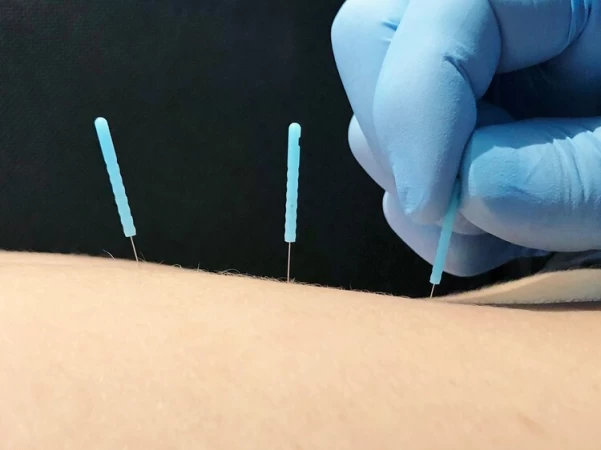
Several individuals suffer from chronic pain symptoms and movement impairment without any apparent and diagnosed diseases. One of the most common reasons for this movement impairment is an unhealed tissue or a muscle in your body which becomes a trigger point of pain in your body and affects several other movement muscles. An unhealed tissue or muscles becoming a trigger point means that when that specific tissue/ muscle is signaled to work, the inefficient blood flow and injury triggers pain receptors to the rest of the muscles as well. The difference between apparent injured muscles and trigger muscles is that you will never feel pain at the exact point of triggered muscle points. However, it will cause chronic pain and movement impairment. Through a modern and tested technique now you can cure chronic pain with a simple and non-invasive procedure of dry needling.
Dry needling is a treatment invented by Dr. Janet Travell in the 1940s. Dr. Travell first experimented with a wet needle (medicated needle) and then explored that the dry needling has the same effect. In many cases, dry needling is more effective than placebo treatment.
It is an effective and desirable technique for certain musculoskeletal discomforts and chronic pain. Dry needling is entirely safe and is an only minimally discomforting procedure. It is performed by trained and skilled physical therapists and requires medical certification for the procedure to perform.
What is Dry Needling?
Dry needling is a procedure in which a dry (unmediated/ without medication) and thin monofilament needle is penetrated in the skin. The location of needle penetration is focused on the muscular trigger points to treat movement impairments and neuromusculoskeletal pains. The penetrated needle will release the trigger point in the muscles by removing any blockages and allowing the blood flow to reach the unhealed injury efficiently. The white cells in the blood flow will gradually heal the scarred tissues and generate flexibility. Dry needling works by supplying blood and fresh oxygen to the twisted muscle fibers. This helps the contracted muscles to relax immediately. The fresh supply of blood flushes out all toxic build-up and acidic chemicals. The optimal supply of blood promotes proper healing. When the needle is inserted it also triggers a response from the brain and spinal cord (the central nervous system). The endogenous cannabinoid system simulates pain modulating effect which results in local analgesia/ pain relief.
The trigger point in dry needling is located by palpating the perceived trigger point and receiving a twitch response which is an involuntary quick contraction of the muscle in a taut band. The needle is often penetrated again to relocate more trigger points in the muscles. You can have one or more triggered muscles in your body.
What is a trigger point in muscle penetrated by dry needling?
A trigger point is defined as a nodule within a muscle of the taut band, also known as a tender point. The tender point elicits referred pain to other locations as pressure is applied to it. Trigger points are a result of tiny tears in the soft tissues which are caused by old and traumatic injuries to the muscles or the local joint. These injuries are often also micro trauma (overuse injuries). The tiny tears in the soft tissues appear when the muscle fibers, fascia, ligaments, or tendons are inflamed. As these tiny tears in the tissues start to heal, the muscles contract and become twisted forming a nodule/ tender tissue in the otherwise smooth muscle fibers. The blood flow becomes restricted in the knotted muscle area and also becomes prone to future injuries from the shortage of blood flow.
As the muscle trigger points are left untreated, they begin to alter the sequence of various muscles contraction to perform the desired movement. As the muscle firing patterns are altered it restricts the range of motion and puts unnecessary stress on associated ligaments and joints.
Is one session of dry needling is enough to get rid of chronic pain symptoms and movement impairments?
The goal of dry needling is to reduce pain, treat muscle tissue, and inactive trigger points. The treatment of dry needling is always incorporated with traditional physical therapy approaches.
It can help individuals who suffer from sports injuries, muscle and fibromyalgia pain, musculoskeletal issues relating to the neck, shoulder, hip, heel, and back pain. It relieves muscular pain and stiffness and improves flexibility and range of motion.
After dry needling procedures that are many joint mobility deficits, muscle firing dysfunction, movement compensations caused by the ever-present trigger points that need to be addressed in order to stop pain from returning. Physical therapies such as prolonged tissue stretching and joint manipulation are used to restore the movements gradually. Exercise instruction is also provided to be conscious and self-identify if the malfunction is appearing again.
Prolotherapy of Denver is an institution that has acquired expertise and certification to perform a procedure of dry needling and provide further consultation regarding the essential physical therapy.